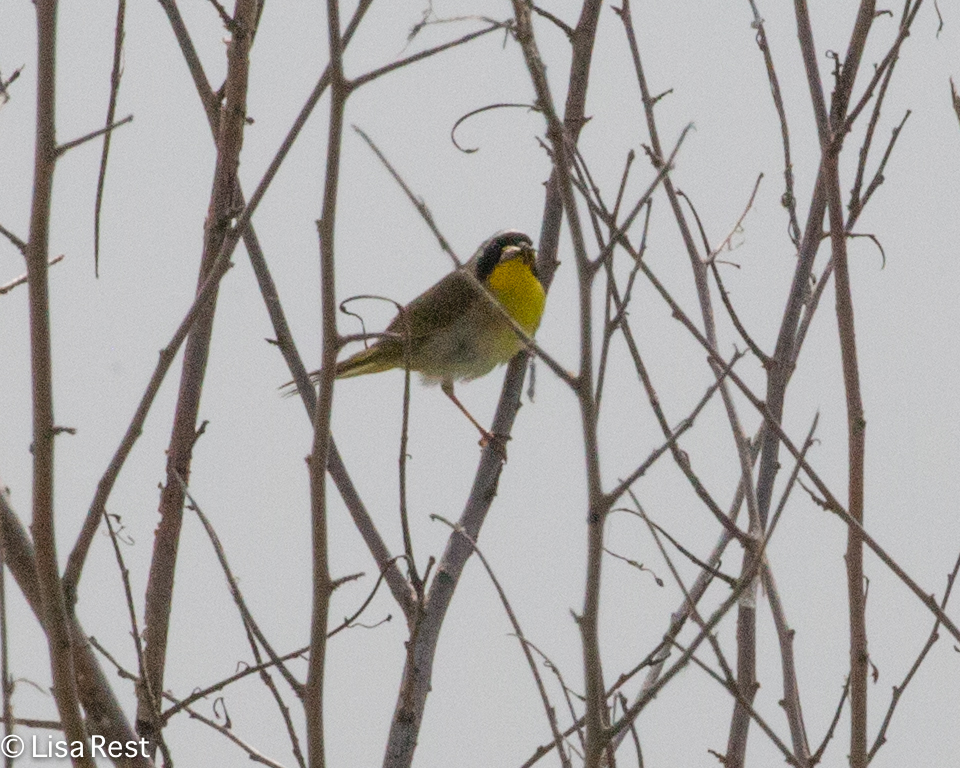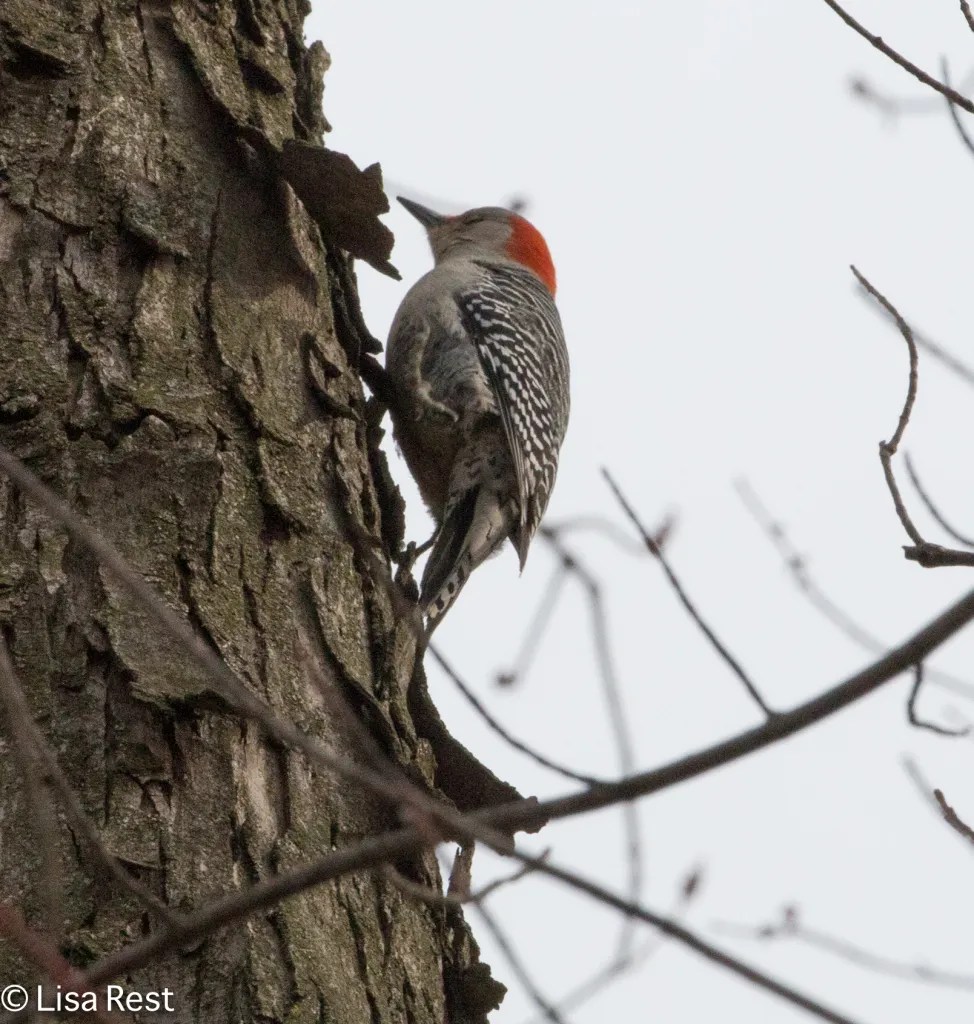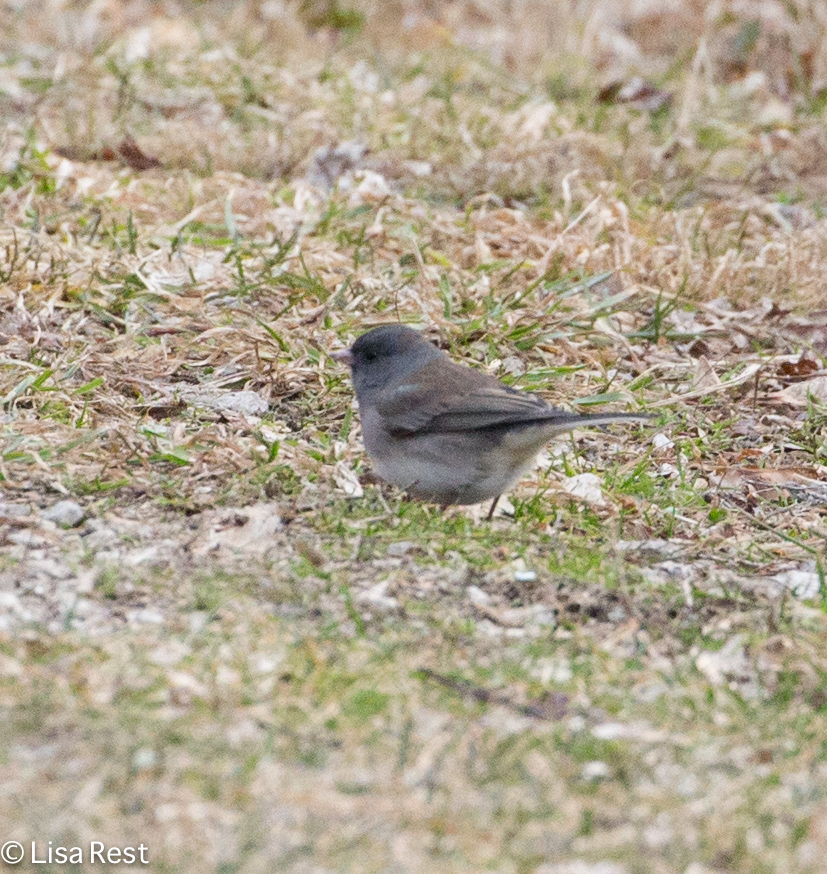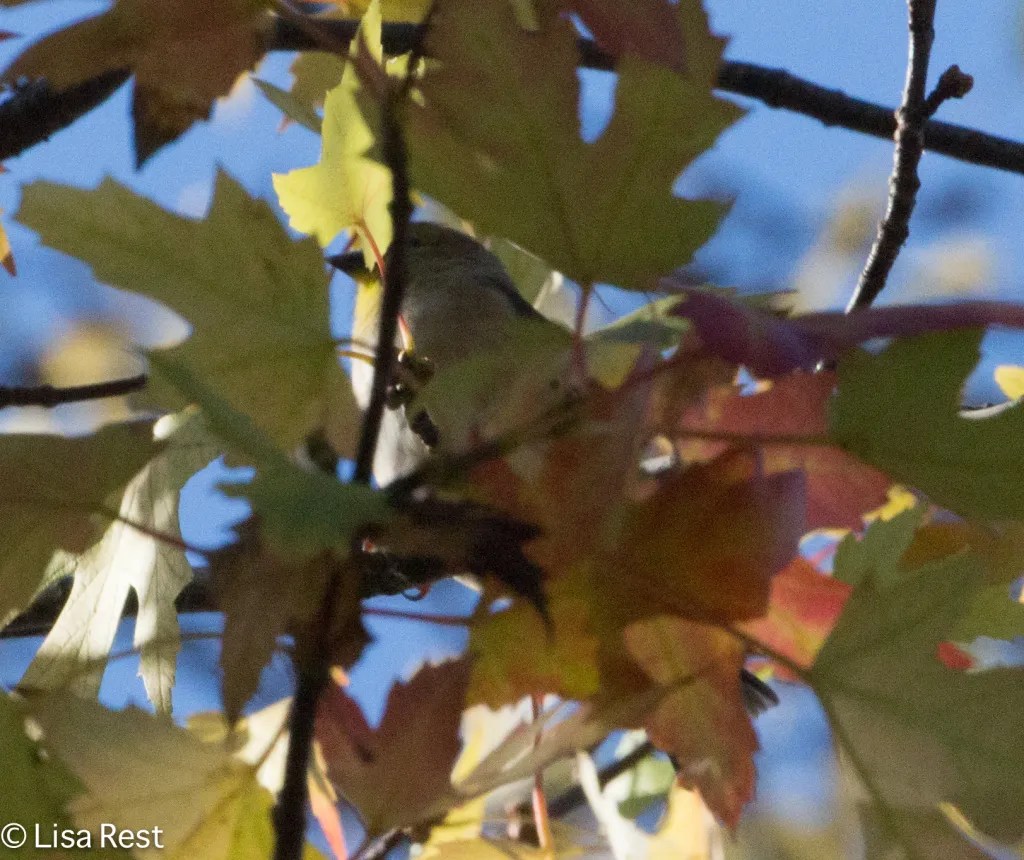
On Tuesday morning, I made it up to the Hebron Trail in a little over an hour and a half. I didn’t leave quite as early as planned; I woke up to some sort of a circuit-breaker issue in the kitchen which had disabled my Internet access but it was a temporary fix after all and it became more a matter of resetting clocks on the coffee pot and microwave and WFMT on the boombox.
As I started to write this yesterday, we were experiencing a lovely downpour. When I went to empty out places where rain accumulates later it looked like we got an inch in about 20 minutes.
Even though Goose Lake Natural Area has received more rain and is no longer considered in drought status, the water levels are still extremely low and that continues to make it really hard to see Yellow-headed Blackbirds. I walked the trail to the lookout, and stood there for maybe a half hour or so, not seeing too much of anything. I thought how nice it would be if a Yellow-headed Blackbird came close enough to the platform so that I could see it well enough, and then one did. It looks to be a molting adult male.






There are always plenty of Song Sparrows here and I recorded the one below singing.

Here are a few more Song Sparrow photos of various individuals.








Also present were several Common Yellowthroats, starting with one on the trail.


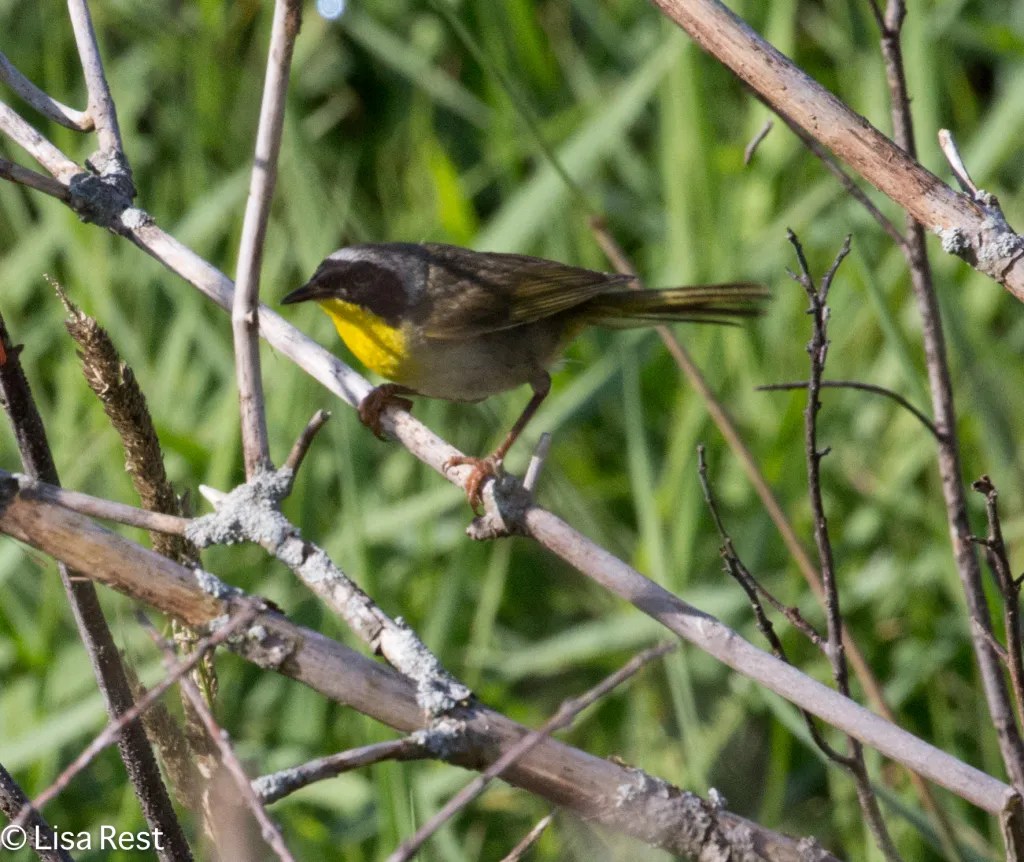


A look at the trail as it stretches out into the open, and then a view of the marshy area with a verbascum thapsis, or Great Mullein, right by the trail.


There were a few Canada Geese which I did not bother with, and. below, some American Coots, but hardly enough water for much else. I did see a couple Great Egrets come in for a landing later but they were totally obscured by vegetation.

I encountered a tree full of Red-winged Blackbirds. There may have been a Yellow-headed Blackbird in this group too. But between the backlighting and the distance I took it for mostly Red-winged Blackbirds and juveniles at that.

I am always intrigued by the female Red-winged Blackbirds.
The female Red-winged Blackbird below was showing off her captured bug.



Below, the bird on the left is a Gray Catbird and the bird on the right, a male Red-winged Blackbird.




After hearing a Willow Flycatcher or two, I managed to photograph this one.






As I stood on the platform, suddenly six Sandhill Cranes flew overhead and into the marsh, where they disappeared into the tall grass.
On the way back to my car I saw this juvenile Northern Flicker.

And followed a Barn Swallow as it swooped around. Bothering with this exercise in futility attests to my desperation.






I did see a sitting Ruby-throated Hummingbird on my way back out. Actually, a friendly young cyclist with binoculars had stopped to talk with me and mentioned she had seen this bird. She also told me I could check out North Branch which was only a few minutes away.


Even though it was getting late in the day and almost 11:00 AM, I decided to go and check out the North Branch Conservation Area. Indeed it was only a few minutes away by car. As it turns out, were one to walk the entire length of the Hebron Trail, you could cross Keystone Road and continue on the gravel-paved trail that runs through North Branch. Although this is a fine plan on a bike, I doubt seriously I will ever do this as I have never even walked the entire 5.5 miles of the Hebron Trail and it is another 1.5 miles at the North Branch connection, making it a round-trip 14 miles. Perfect on a bike, but not on foot. But it’s good to know the two are connected and provide extensive habitat.
The first thing I noticed when I started walking the trail at North Branch was dramatic billowing clouds in the blue sky.

Below are a few scenes of the prairie at North Branch. The middle photo features Cupplant which looks a lot tamer than the towering monsters that have overtaken my backyard.




That late in the day I didn’t know what birds I might see. I definitely wasn’t hearing much at that hour. But there were a couple very busy Eastern Kingbirds.






I did find a Field Sparrow here.

And I was happy to see a male Orchard Oriole, if obscurely.


There was an Eastern Bluebird checking me out.



Below, a Cloudless Sulphur Butterfly, some Rattlesnake Master and Wild Bergamot with a bee.
I didn’t make it as far as the bridge going over the Nippersink Creek, which is what the “North Branch” refers to, and I’m sorry that I didn’t go that far but it was getting late and I had that long drive home to look forward to. So I will definitely stop back here again, I hope sooner than later.

There were plenty of Dickcissels here too, although I could not see them until I spotted this one atop a utility wire. I think years ago I saw my very first Dickcissel on a similar perch.

The clouds were just beautiful that day and I liked the distant Great Egret using them as a backdrop.

American Goldfinches are going to be easier to see now that there are plenty of plants with fresh seeds to eat.
Two more parting shots of an Eastern Kingbird…


The Compass Plant is one of several well-presented species here. I suspect much has been planted, which is fine. I confess I just read a great article in The Atlantic extolling the beneficial aspects of grasslands that are often overlooked in our conditioned preference for tree cover, and it reminded me of how valuable these areas are. It has the somewhat unfortunate title “Trees Are Overrated” but I suspect that is attention-getting strategy.


All that walking on Tuesday gave me permission to only swim on Wednesday, and today after early rain and gardening was for shopping. I plan to return to the Portage tomorrow morning to see if anything new shows up.























































